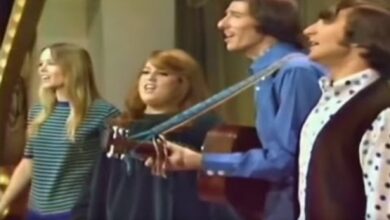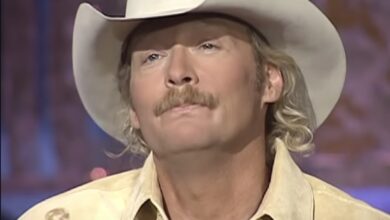The Vogues’ “Five O’Clock World” Captures the Spirit of the American Worker and Redefines Blue-Collar Pop in 1965
In late 1965, as American music was straddling the lines between surf rock, British Invasion, and Motown soul, a surprising hit emerged that spoke directly to the working class with both empathy and urgency. The Vogues’ “Five O’Clock World” became a rousing anthem of daily struggle and nightly redemption. Released in November of that year, the single quickly rose to No. 4 on the Billboard Hot 100 and cemented the group’s place in the pop landscape. Driven by a relentless beat and expressive vocal harmonies, the song offered more than just a catchy tune—it became a cultural timestamp for millions of Americans juggling labor and longing during a pivotal moment in social history.
The Vogues originated from Turtle Creek, Pennsylvania, a blue-collar suburb of Pittsburgh, and their sound was steeped in both the doo-wop vocal tradition and early ‘60s pop sensibility. Formed as the Val-Aires in the late 1950s by high school friends Bill Burkette, Don Miller, Hugh Geyer, and Chuck Blasko, the group began performing locally and eventually gained regional traction. What set them apart, even in a crowded era of vocal groups, was their precision harmonizing and ability to blend upbeat instrumentation with emotional storytelling. By the time they rebranded as The Vogues and secured a deal with Co & Ce Records, they had refined a sound that was both radio-friendly and rooted in the working-class identity they so effortlessly reflected.
“Five O’Clock World” was penned by songwriter Allen Reynolds, who would later find fame producing hits for Don Williams and Crystal Gayle. Inspired by the grind of the 9-to-5 routine and the longing for escape when the workday ends, Reynolds wrote the lyrics as a kind of everyman’s manifesto. Unlike the idealistic escapism of surf music or the romantic rebellion of British pop, “Five O’Clock World” brought the focus back to the everyday struggles of the American labor force. Lines like “Up every morning just to keep a job / I gotta fight my way through the hustling mob” weren’t just clever—they were real.
The recording itself was a study in creative production. Co & Ce Records brought in producer Nick Cenci, who paired the band’s signature vocal arrangements with an assertive, almost galloping rhythm section. The jangly 12-string guitar riff—distinctly Byrds-like—gave the song a modern edge, while the use of yelping falsettos and layered harmonies recalled the doo-wop and barbershop traditions of the previous decade. Bill Burkette’s lead vocal struck a perfect balance between fatigue and determination, making the payoff of “But it’s a five o’clock world when the whistle blows / No one owns a piece of my time” feel genuinely cathartic. It was one of the earliest pop songs to effectively merge blue-collar storytelling with contemporary production flair.
Upon release, the song immediately found a receptive audience. Its December 1965 debut was met with strong radio rotation, particularly in the Midwest and Rust Belt cities where its themes resonated most deeply. By January 1966, it had climbed into the Top 5, a feat that marked The Vogues’ second major hit following their earlier success with “You’re the One.” The song not only appealed to teenage pop audiences but also connected with adult listeners who saw their own daily grind mirrored in the lyrics. It was a rare example of generational crossover at a time when musical tastes were beginning to splinter.
The cultural impact of “Five O’Clock World” was subtle but powerful. It humanized the American workforce at a time when protest songs were beginning to dominate the airwaves. Rather than rage against the system, the track embraced perseverance. It didn’t critique capitalism—it acknowledged the struggle and found joy in surviving it. In a decade increasingly defined by youth rebellion, “Five O’Clock World” offered solidarity for those who stayed on the clock. Its celebration of personal time after work prefigured a whole generation of songs about escape and self-ownership.
For The Vogues, the success of the single marked a turning point. It established them not just as a regional act, but as a national name. They quickly became in-demand for TV appearances, including American Bandstand, and their harmonies set them apart from the harder rock acts rising on the coasts. The hit also allowed them to tour extensively and laid the foundation for further success with songs like “Turn Around, Look at Me” and “My Special Angel.” Their blend of pop and doo-wop would prove influential in sustaining harmony-based groups well into the 1970s.
Musically, “Five O’Clock World” helped validate a new blend of sounds. It bridged the rawness of rock and roll with the polish of pop, but also borrowed from country and soul traditions. In doing so, it opened doors for genre fusion that artists like Glen Campbell and Elvis Presley would soon exploit in crossover records. Its rhythmic urgency and lyrical realism were quietly influential in shaping blue-collar rock anthems from Bruce Springsteen’s early catalog to the softer rock sounds of Seals & Crofts and America.
Over the decades, the song has been covered by a range of artists. Hal Ketchum offered a country rendition in the early 1990s, while Julian Cope recorded a psychedelic version that emphasized its surreal energy. But perhaps the most famous second life for “Five O’Clock World” came through its use as the theme song for The Drew Carey Show in the mid-1990s. That placement introduced the song to a new generation and reminded older listeners of its enduring relevance—especially in a sitcom about everyday working-class frustrations.
The song’s legacy is tightly bound to the working-class ethos of its time. Released during the Vietnam War era, amid rapid social and economic change, “Five O’Clock World” managed to transcend political divides. It didn’t take sides—it took stock. Its simple but poetic message endures because the routine it describes remains familiar to millions: the daily grind and the golden hour of freedom that follows. For The Vogues, whose later years were marked by lineup changes and occasional reunions, this track remains their signature achievement.
Today, “Five O’Clock World” continues to find life in films, commercials, and playlists curated around themes of resilience and hard work. Its unassuming structure and heartfelt delivery make it timeless. It’s a song you don’t have to think too hard about to feel—it resonates because it tells a truth we all know. In the pop lexicon, where escapism often rules, this track keeps its feet firmly on the ground.
While The Vogues were eventually overshadowed by the massive cultural waves of psychedelia, hard rock, and protest music that followed, their contribution—especially through this track—remains quietly vital. They captured the voice of a silent majority who kept the wheels turning while others chased revolution. “Five O’Clock World” endures because its truth doesn’t expire.
In the final measure, The Vogues gave the American worker a pop song. Not a gimmick or a protest, but a hymn to the clock-out moment. It’s not a love song, yet it’s full of heart. It’s not a political song, yet it speaks volumes about class, dignity, and daily life. In the echo of that factory whistle, The Vogues found harmony—and in that harmony, they found history.



